We’re often asked which travel camera we use and which lenses we work with. I (Bolle) have been passionate about photography for over 14 years, and when we started our world trip in 2015, I was able to share my passion with Marco. These days, we always carry a lot of equipment with us when we travel, and it’s not uncommon for our camera backpack to weigh significantly more than the rest of our luggage, including our clothes. Welcome to the life of two photo-loving travel bloggers!
If you’ve been following us for a while, you might have noticed that we’re not big fans of constantly putting ourselves in the spotlight in photos. Our focus is on the destinations themselves, the wonderful and diverse landscapes, as well as snapshots of moments and animals. In the following article, we’ll tell you which camera we always have with us and which gimbal, photo drone, lenses, batteries, memory cards, and hard drives we use. Enjoy browsing.
- Photo equipment for traveling
- 1. Our travel camera, the Sony Alpha 7M3
- Lenses for the Sony Alpha 7M3
- Accessories for the Sony Alpha 7iii
- 2. Our small travel camera for in between
- Lenses for the Sony Alpha 6000
- Accessories for the Sony Alpha 6000 travel camera
- 3. Our action cam including accessories
- 4. Our photo drone including accessories
- Drone insurance
- Drone labeling
- 5. Tripod & gimbal
- 6. Smartphones & Laptops
- 7. Memory cards & data backup while traveling
- 8. Polarizing filters and gray filters for our travel camera
- 9. Cleaning and other tips
- Remote shutter release, microphone and app
- 10. Tips for image editing
- Our editing programs
- Tools for Instagram
- 11. Insurance for our equipment
Photo equipment while traveling
We usually take a lot of technology with us on our trips, including our laptops, one or two cameras, various lenses, sufficient batteries, enough memory cards, hard drives, and so on. Depending on our destination, we also take a photo drone and/or a gimbal. We have been using Sony cameras and lenses for around six years. Why Sony? Hmm, we can’t give you a specific reason; we’re simply fans of the brand and very satisfied with the products.
At the beginning of our world trip (2015), we had a bulky Canon 650d in our luggage, which was completely sufficient for our needs at the time. Over time, however, we learned and became increasingly demanding of our equipment. While many years ago we still shot with an SLR and a compact camera, we later switched to a full-frame camera. In the following article, we’ll tell you which tech gadgets we currently use and what we can’t live without.
1. Our travel camera, the Sony Alpha 7M3
For about three years, we’ve been using the Sony Alpha 7iii* (full-frame system camera) for most of our photos and videos. This fulfilled a small dream of ours. For a long time, we longed for a full-frame camera that wasn’t too heavy and was easy to handle. Since we’re big fans of the Sony brand, the decision was fortunately easy for us. While you’ll have to dig deep into your pockets for the Sony Alpha 7M3, it’s worth it. At least if you want to take high-quality photos.
So far, we’re very happy with the camera. The autofocus is good, and the video recordings are great, too. Depending on the lens, the camera weighs a little more, sometimes a little less. Overall, it’s significantly heavier than the small Sony Alpha 6000, but still lighter than the bulky SLR cameras of the past. The camera feels high-quality and is very well made.
Another positive is that we can now insert two memory cards into the camera. The Sony Alpha 7iii also performs very well in terms of battery life. If we only take photos with the camera on a production trip, one battery easily lasts for three days. We also find it positive that the integrated image stabilizer makes handheld photography and filming much easier. However, points of criticism are that there is again no fully pivoting display and the new batteries are very expensive.
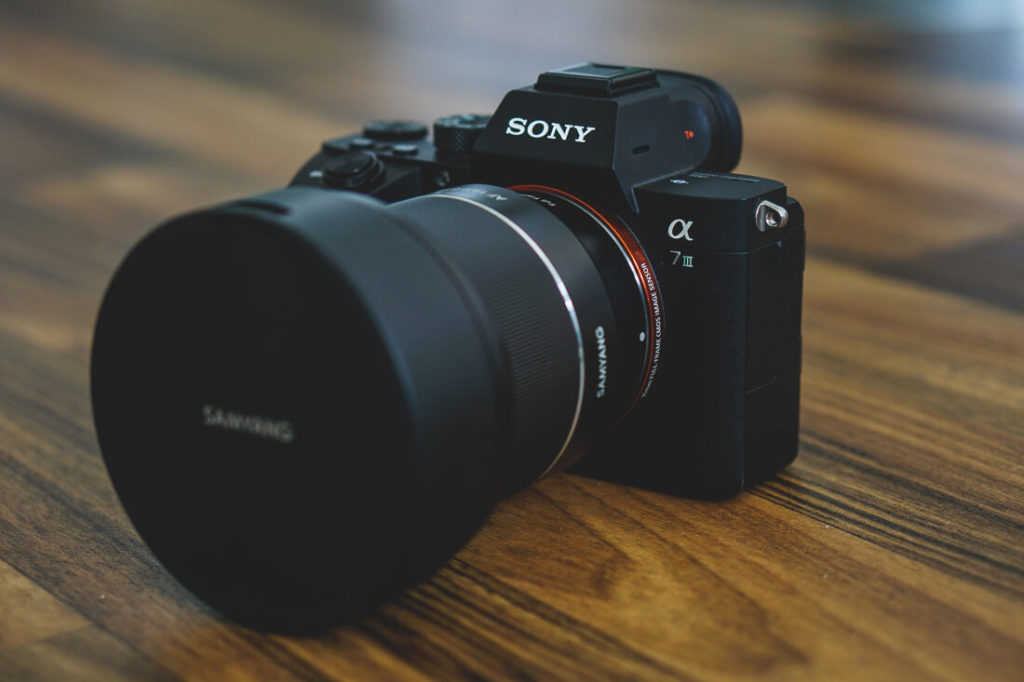
Lens for the Sony Alpha 7M3
Every camera is only as good as its lenses. Sony lenses are unfortunately very expensive, which is why we also like to use other brands (Sigma, Tamron, Samyang, etc.). It’s important to note that you should use lenses designed for a full-frame camera. The Sony Alpha 6000, for example, uses an APS-C sensor, while the Sony Alpha 7iii uses a full-frame sensor. Therefore, there are also lenses specifically designed for full-frame or small-frame cameras.
When we purchased the Sony Alpha 7M3, the 28-70mm zoom lens (f3.5 – 5.6)* was included. We are very satisfied with the lens, as it delivers decent image quality. We also took some great video recordings with it and can therefore recommend it with a clear conscience. However, we hardly ever use it anymore.
We really like the Sony 28mm (f 2.0)* prime lens. We also use it on the Sony Alpha 6000 and have taken many beautiful pictures and videos with it. For over two years, we have been using the Sony 35mm lens (f 1.8)* for most of our photos. We also have the 50mm (f 1.8)* in our drawer as a backup. Also brand new is the Sigma 20mm (f 1.4)*, which we will be testing extensively. So far, we really like the focal length and it might even become our new favorite lens.
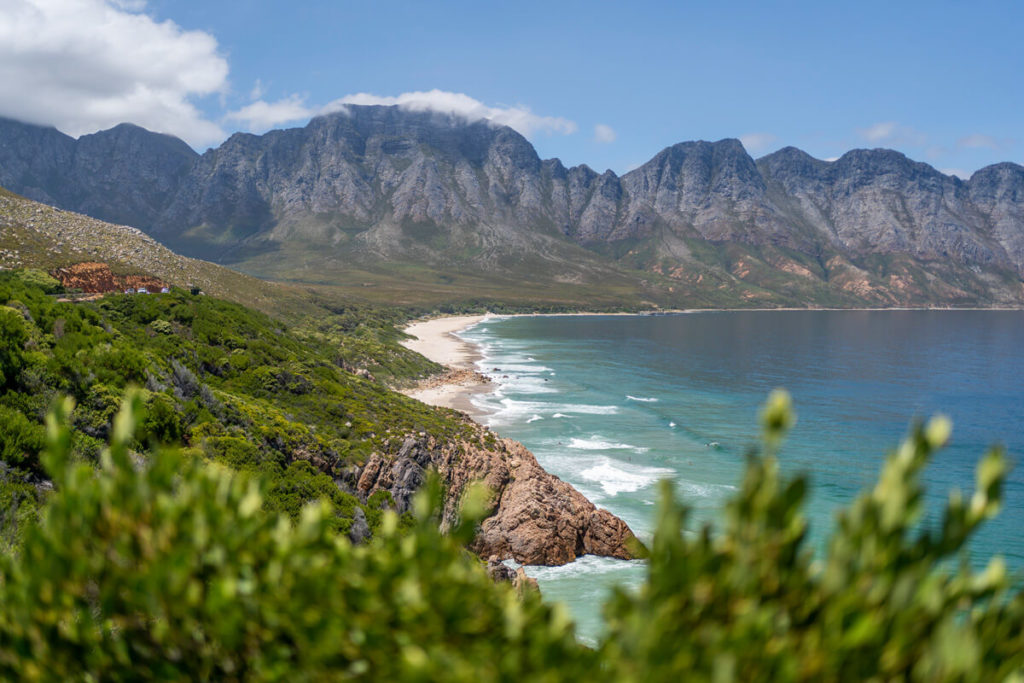
Since we primarily photograph landscapes and cities (buildings, streets, etc.), it made sense to get a wide-angle lens for the Sony Alpha 7M3. The selection isn’t that great, but the price range is. A G-Master for €1500-€2000 was still too expensive for us, so we opted for the 14mm from Samyang*. The lens particularly impressed us with its constant aperture of 2.8. This allows for great wide-angle shots with beautiful bokeh.
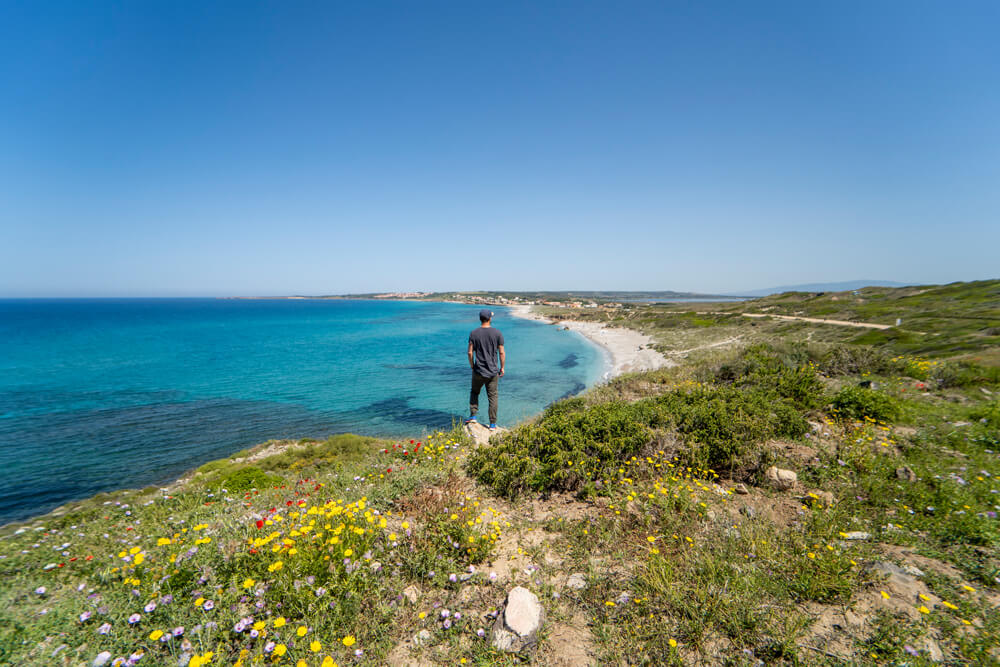
Since we frequently travel to African countries (Botswana, South Africa, etc.) to photograph animals, we purchased the Tamron 105-500mm (f/5-6.7)*. We are very satisfied with this lens and can recommend it 100%. It’s about €500 cheaper than Sony’s own zoom lenses, but it also offers top quality. Such zoom lenses are naturally very heavy (1.5 to 2 kg), but anyone who loves wildlife photography will gladly accept that.
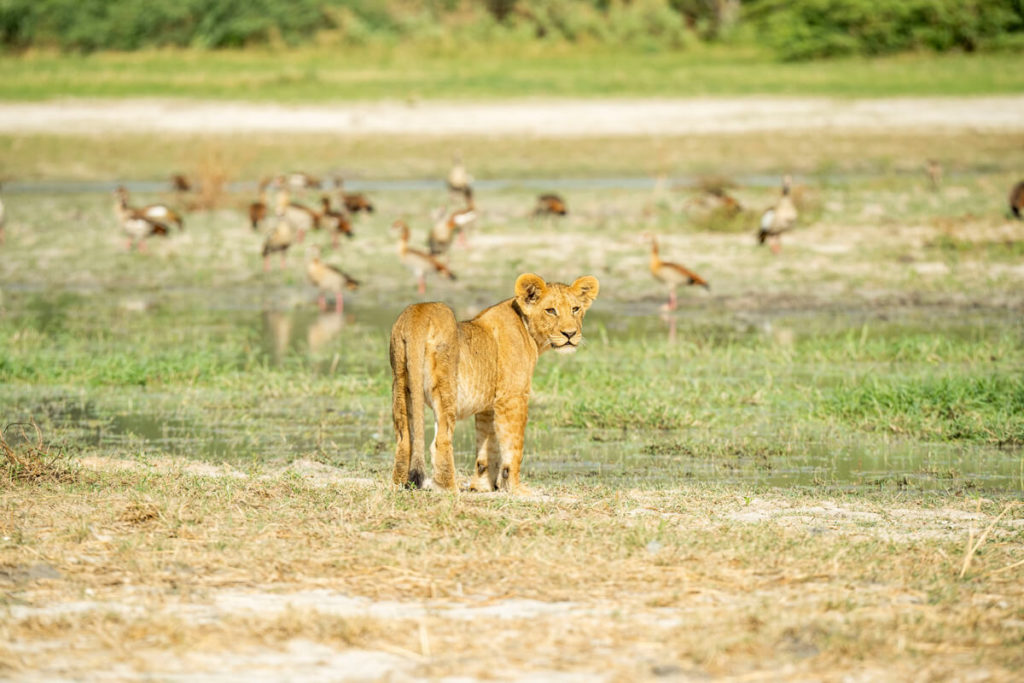
Accessories for the Sony Alpha 7iii
We ordered the SWIDO screen protector* for our Sony Alpha 7iii to prevent the display from getting scratched or damaged. The package includes two screen protectors. We also bought three additional spare batteries* so we’re well-equipped for longer productions. The batteries of the Sony Alpha 7iii generally last a very long time (several days if we only take photos). We also recommend a charging station* with at least two battery slots so you can charge multiple batteries at once.
Our accessories for the Sony Alpha 7M3 also include a small bag* for our backpack. This allows us to always store the camera safely. You can also buy padded neoprene inserts* for the backpack, which are also pretty cool. For really good sound, we use the small clip-on microphone from Rode*. So far, we’re very happy with it, but we rarely use it, as we usually don’t need sound for our mood videos anyway.
2. Our small travel camera for in-between trips
A few years ago, we bought the Sony Alpha 6000* travel camera. We’re still happy with this small, compact camera, and at that price, you can’t really go wrong. Back then, we paid just under €600 for the camera with the kit lens. Unlike an SLR camera, the Sony Alpha 6000 is simply perfect for traveling.
It’s light, handy, and fits in any small handbag or tote bag. This camera is perfect for beginners. It’s a powerful camera that lets you take great photos and videos. We highly recommend the Sony Alpha 6000!
The successor model, the Sony Alpha 6400*, is now available starting at €969 with a kit lens. However, the Sony Alpha 6000 is still perfectly adequate for any beginner. The Alpha 6400 simply takes things to the next level in some areas.

Lenses for the Sony Alpha 6000
It’s not always just the camera itself that’s crucial for your images, but also the lenses you use. When you bought the camera, the kit lens* (16-50 mm) was included. You can use this standard zoom lens for almost any occasion. It’s a “go-to lens,” so to speak, and it performs well. We also have the 50mm lens* for the Sony Alpha 6000. We love working with prime lenses, as you can achieve more beautiful effects with an aperture of, say, f/1.8. Apertures like these are very fast, and this creates great bokeh (the effect of the background being blurred).
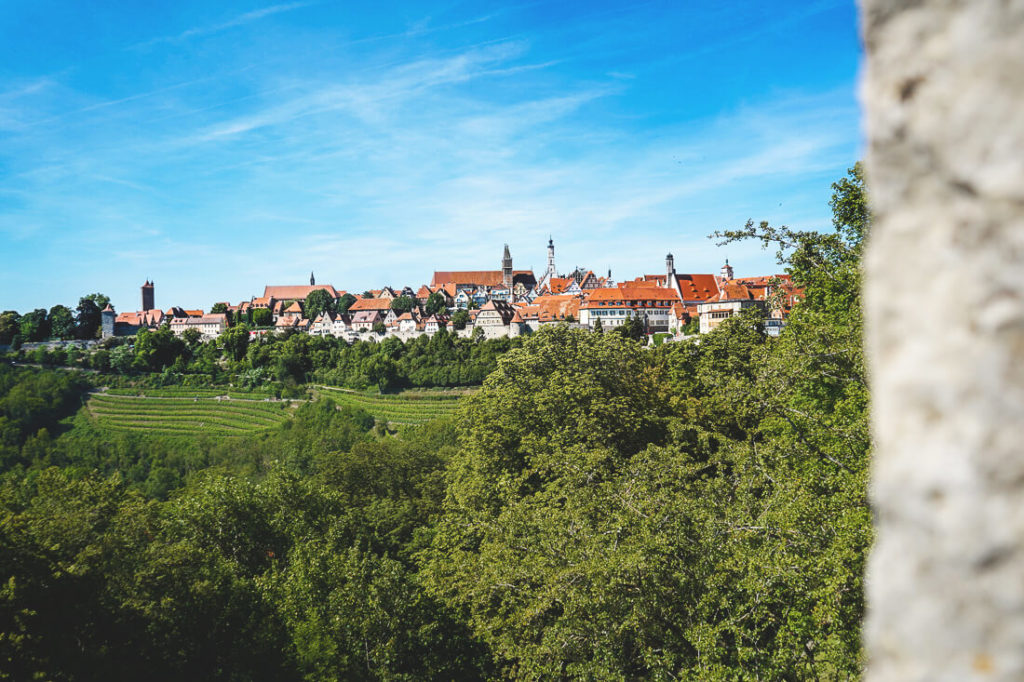
But that’s not all the lenses. As already mentioned, we also have the 28mm (f/2.0)* prime lens from Sony. This lens offers super sharpness and smooth bokeh. This lens is also very suitable for filming. The lens is also very small and lightweight, perfect for travel photography. It weighs just 200 grams and can also be used on a full-frame camera.
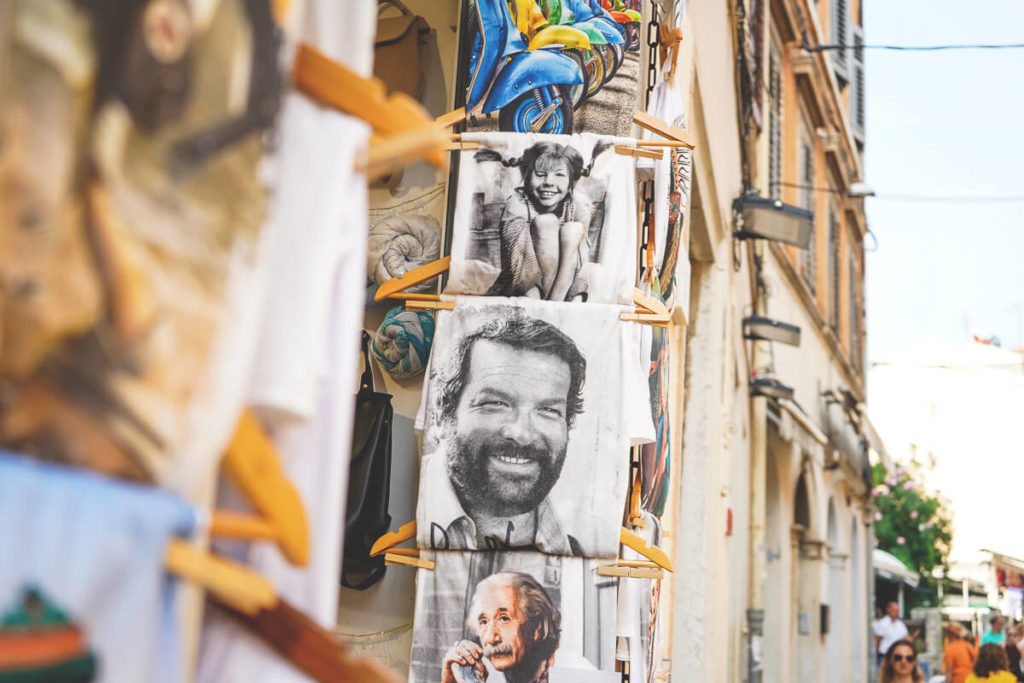
We really enjoy taking photos with wide-angle lenses, especially when we want to capture landscapes. So far, we haven’t bought a wide-angle lens for the Sony Alpha 6000. But that won’t be long. There are, for example, the Sigma 16mm or the 10-18mm from Sony. We used a similar lens on our Canon 650d and were always very satisfied with it. Update 08/2019: We now have the Samyang 14mm f2.8 for our full-frame camera.
Also interesting: Sigma 30mm*, 20mm*, 35mm* or the Sony 16-70mm standard zoom* and the Sony 18-200mm travel zoom*.
Accessories for the Sony Alpha 6000 travel camera
Of course, it’s not just the camera and lenses. Our photo equipment includes much more. Starting with the charging station for the batteries. We use the Duo Station from PowerExtra* and are very satisfied. You can charge two batteries simultaneously via USB. The device also has an LED display with the charging status. We got the batteries from RAVPower*. One battery usually lasts us a whole day if we don’t film much and mainly take photos.
Our own stylish camera straps* are also cool. They not only look good, they’re also comfortable. If you take a lot of photos and want more comfort, you can check out the shoulder straps with a quick-lock function*. You should also store your camera securely. The small Sony Alpha 6000 fits perfectly in a small neoprene bag* or a wrap*.
If you have more than just a small camera and one lens, it makes more sense to pack all your equipment in a camera backpack. We think the Tarion camera backpack* is really stylish. It looks like a normal, cool daypack (also the Mantona Luis Retro Photo Backpack*). We also use smartect tempered glass* on our Sony Alpha 6000 to protect the display.
3. Our action camera including accessories
We have the GoPro Hero 11 Black*, which we mainly use for underwater shots or for action shots. One of our favorite gadgets is our battery charger with space for 3 batteries*. This not only allows you to safely store the batteries but also charge them simultaneously via USB-C. We love it! To protect the displays and lenses, we also use protective films*. For video recordings in strong winds, we use the GoPro Media Mod*. You can easily attach this. The quality is very good.
4. Our photo drone including accessories
We currently travel with the DJI Mini 2*. It’s small, handy, and fits perfectly in our luggage. Luckily, we didn’t buy the huge Phantom drones back then, which you had to pack in a separate case. Although, of course, we’ve been eyeing a camera drone for years. The lightweight and foldable DJI Mini 2 mini camera drone offers 4K video recording, 10 km of video transmission, 31 minutes of flight time, and weighs less than 249 grams.
We definitely recommend buying the bundle (combo). The drone is much easier and safer to control with a controller. You can also control it with your smartphone, although the transmission range is shorter than with a controller. The bundle also usually includes two to three batteries (we have four batteries), a carrying case, a charging station for the batteries, propeller pairs, and propeller protectors. This fly combo is currently available for just €629 (DJI Mini 2 Fly Combo*).
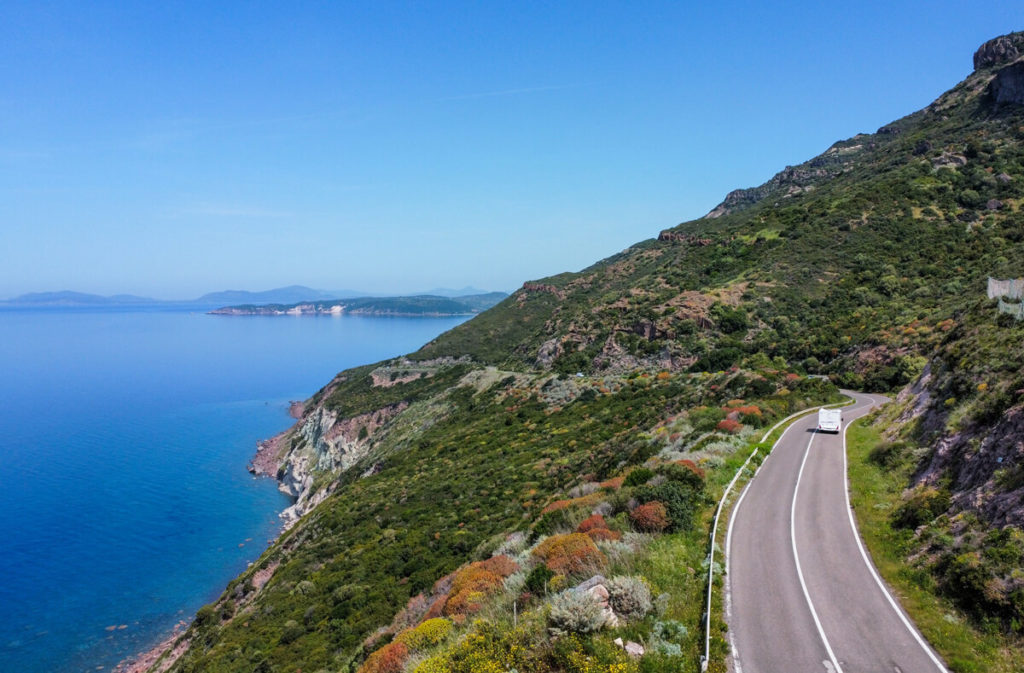
Drone Insurance
Very important if you want to fly with a photo drone: You need liability insurance for drones. This insurance covers damage that could occur with your drone. Just imagine your drone crashing, landing on a car, and causing scratches or other damage. Anything can happen. It’s best to check your personal liability insurance and extend it to include drone use.
There are many providers on the market today. It’s important to read the fine print carefully. You’ll often find many restrictions there. The liability insurance from Haftpflichthelden* is highly recommended. They cover virtually all flight maneuvers permitted in Germany. Although you’ll have to pay a €150 deductible out of pocket in the event of damage, the provider still offers the following benefits:
- Private drone flights are covered
- The weight of the drone(s) must be less than 5 kg
- Limit of coverage: €50 million
- Insurance is valid worldwide
- All members of the household are covered
- Part-time activities included
Drone marking
Another important point: Drone marking. Since October 2017, all unmanned aerial systems with a takeoff weight of 250 g or more must be marked with a fireproof sticker. This sticker must display the user’s name and address. Such a small sticker costs less than €10 and can be easily ordered online (e.g., from the German Association of Copter Pilots). We’ve affixed our badge to the side of the drone body.
5. Tripod & Gimbal
If you want to take a tripod with you while you’re on the go, you shouldn’t buy the cheapest thing in the supermarket. A €20 tripod won’t last long. We have the Rollei Compact Traveler Tripod*, which is light, compact, and very handy. You can simply fold it up and put it in your backpack. You should definitely use a tripod, especially for long-exposure shots.
We now also have a gimbal, which we can use primarily for smooth video recordings. With the DJI Ronin-SC Gimbal*, we can perfectly stabilize even action-packed scenes. It’s best to watch a video on YouTube. We use the gimbal primarily when we produce more complex videos for clients.
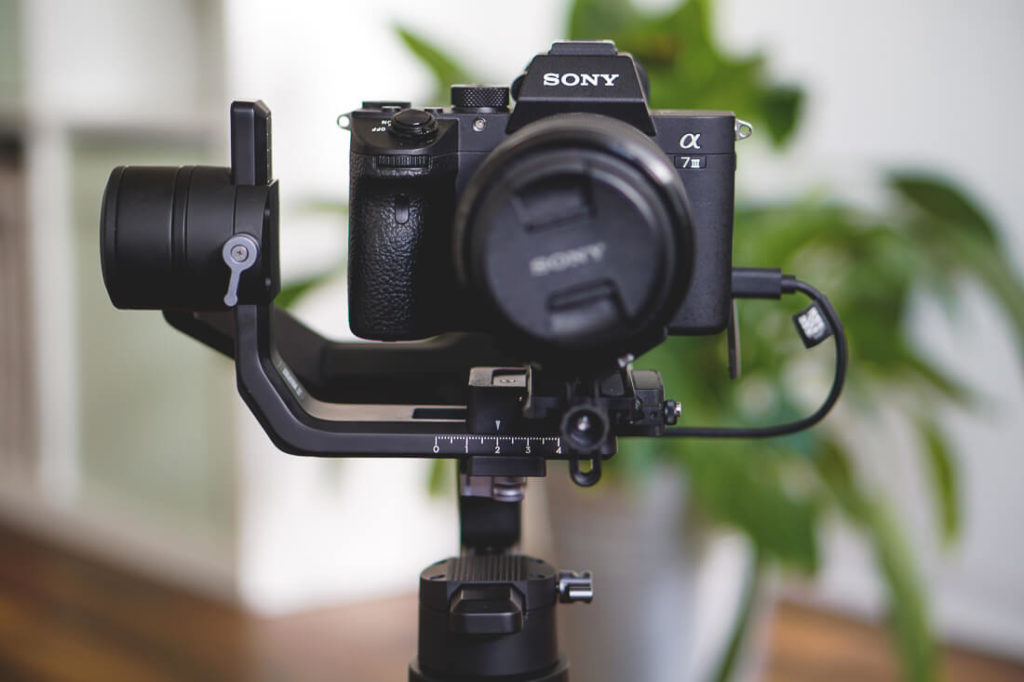
6. Smartphones & Laptops
We are absolute Apple fans and have been more than satisfied with the products for many years. We currently use the iPhone 15 Pro* (with 256 GB storage) for our production trips. This allows us to take great videos and photos, which we then upload primarily to Instagram. The quality is significantly better with an iPhone than with an Android smartphone.
The cool thing about the iPhone 15 Pro is that we have an enormous amount of storage and three lenses (including a telephoto zoom and wide-angle), with which we can take really great photos and videos. We also ordered protective films* for the iPhone, a sturdy case*, and a Popsocket* for a better grip.
We both use a MacBook Pro (13-inch)* for work, which we are very happy with. These powerful laptops not only have an incredibly long lifespan and top quality, they also simply perform very well. “Open and go” is the motto here.
7. Memory Cards & Data Backup While Traveling
Data backup while traveling is a very important topic. Since we also implement many client projects on our travels, we often back up our data twice or three times. In the evening, we transfer the data from the memory cards to our small hard drives (1 TB-2 TB)* for the road. As long as the memory cards aren’t full, we also keep all the travel data on these cards for as long as possible.
At home, we then transfer this data to our large hard drives (4 TB)*. We are currently still looking for a provider for a cloud service. We would like to have all our photos and videos stored in a cloud as well. Update 2022: We have been using the pCloud cloud service for about a year now. Oh, and before we forget: We safely transport our SanDisk Extreme Pro memory cards* in small storage boxes from JJC*.
8. Polarizing filters and neutral density filters for our travel camera
Have you ever heard of polarizing filters? Or ND filters (also called gray filters)? For example, if you want to take a long-exposure shot in broad daylight, you need an ND filter*. This reduces the amount of light entering the camera by a certain number of f-stops. An ND filter also makes it ideal for filming in bright light with an open aperture.
With so-called polarizing filters*, you can reduce or even intensify reflections (e.g., in a lake or puddle). Polarizing filters can also make a blue sky more intense and darker. There are other filters as well. However, for beginners, polarizing and neutral density filters are the most important ones to start with.
9. Cleaning and Other Tips
It’s important that you regularly clean your travel camera and accessories. Whether it’s 100% humidity in the rainforest, fine sand from the Sahara Desert, or water splashes from the many boat trips – our photo equipment has been through a lot. We always carry two or three cleaning cloths with us, as well as a blower, a cleaning brush, and a sensor cleaner. You can get the complete cleaning set* on Amazon for just under €20. Highly recommended!
Remote shutter release, microphone, and app
If you want to take a cool photo of yourself without posing for a selfie, it’s best to use a wireless/remote shutter release*. This way, you can position the camera in front of you and take relaxed photos (also recommended for long exposures). This also works, of course, if you set the camera to self-timer mode.
Alternatively, you can use the Imagine Edge Mobile App* on your smartphone and pair it with the camera. If you want more professional filming with good sound, you should use an external microphone. YouTubers, for example, swear by the Rode VMPRY VideoMic Pro Rycote* (and others from Rode).
10. Image Editing Tips
We love bold colors, beautiful landscape shots, drone shots, close-ups, and meaningful Instagram stories. However, we don’t spend much time editing the images. We don’t use presets or other filters. We just tweak a few controls, and that’s basically it. It’s important to us that the images ultimately have some connection to reality. In the end, less is more. Don’t get too lost in image editing!
Our editing programs
We don’t edit the photos from our travel camera particularly extensively. We often just adjust the brightness, contrast, and color intensity a little. For this, we’ve been using an Adobe subscription with Photoshop and Lightroom* for almost 10 years. You can get this program combo for only €11.89 per month, sometimes even cheaper on Amazon during sales. With that, you’re already well-equipped.
Lightroom is easy to use and enhances your photos with just a few clicks. On YouTube, you can find the right explanatory video for almost any topic. We also taught ourselves everything. The apps are even free for your smartphone.
Tools for Instagram
If you’ve been following us for a while and watch our Instagram stories, you’ll have noticed that we also like to use another app for this. With the Unfold app, you can spice up your stories a bit. There are various templates and fonts that you can use to create and save descriptive stories. We use the InShot app for editing videos.
There’s also the StoryArt app. You can create really cool stories with this, too. We bought the complete package for €10 and can now use numerous, really stylish templates. Alternatively, you can also create stories with Canva. Canva is also free. We use it to create banners, header graphics, graphics for Facebook, Instagram, Pinterest, newsletters, and even e-books, among other things.
Note: With the Imaging Edge Mobile app, you can send the images from the Sony camera directly to your smartphone. This way, we can quickly edit and upload a few images ourselves on our smartphone. This function is really super helpful and has become indispensable for us.
11. Insurance for our equipment
Since we always travel with very expensive technical equipment, we always insure our cameras, accessories, and laptops with Allianz* for a year. Last time, we paid only about €78 for the one-year camera insurance (including lenses and accessories). Coverage includes damage from theft and robbery, damage from liquid and moisture penetration, and damage from natural disasters, falls, and accidents. You can purchase this insurance here*.